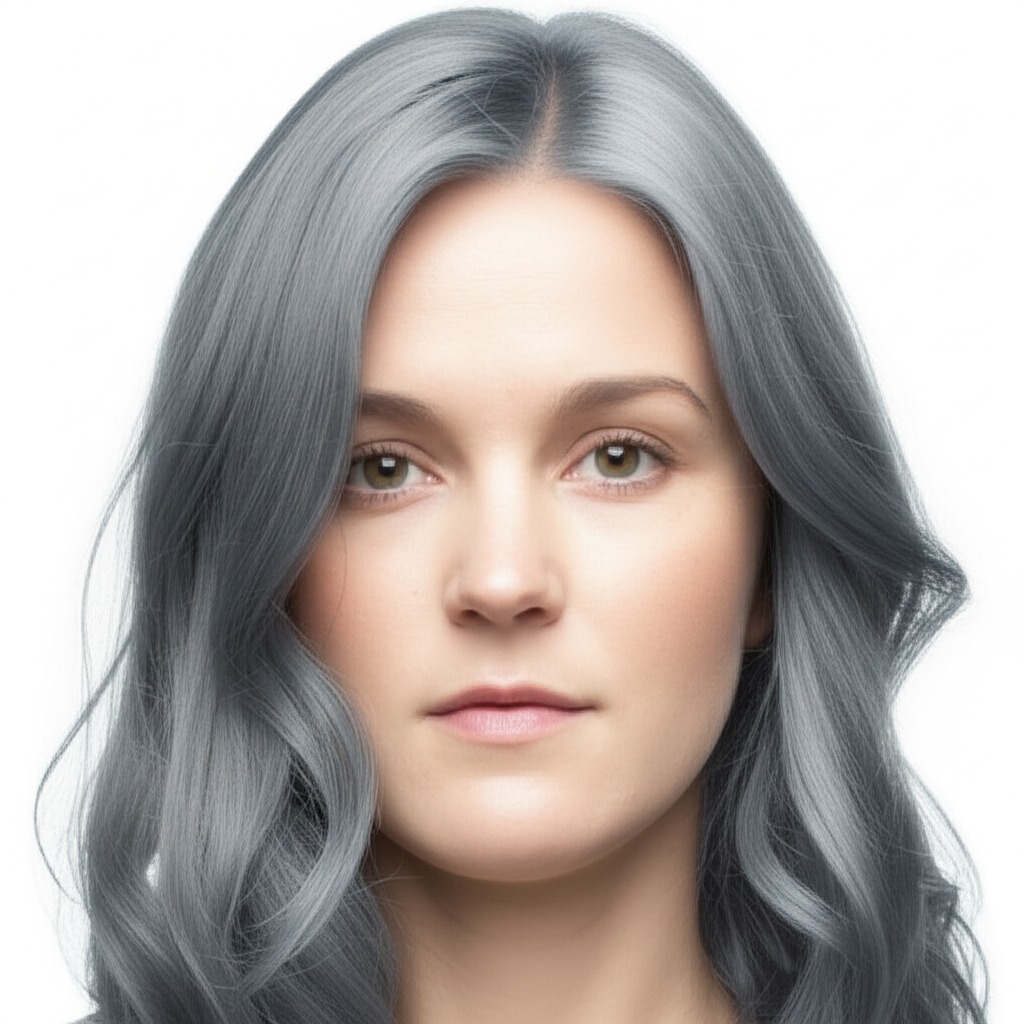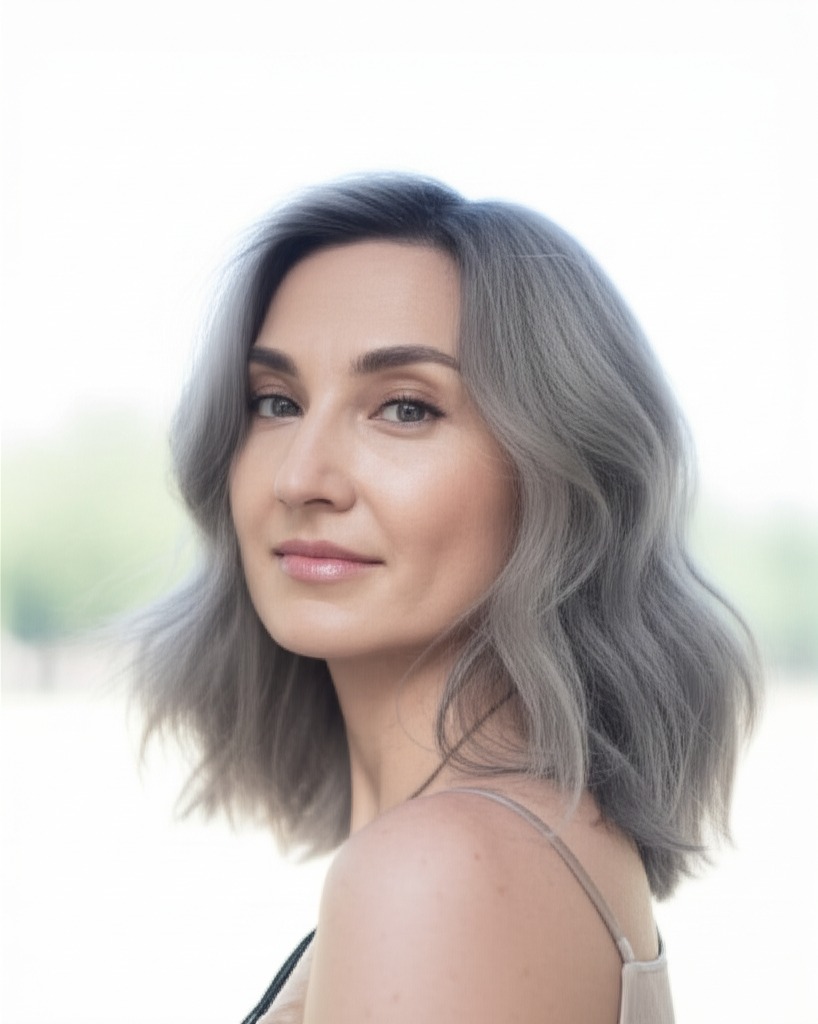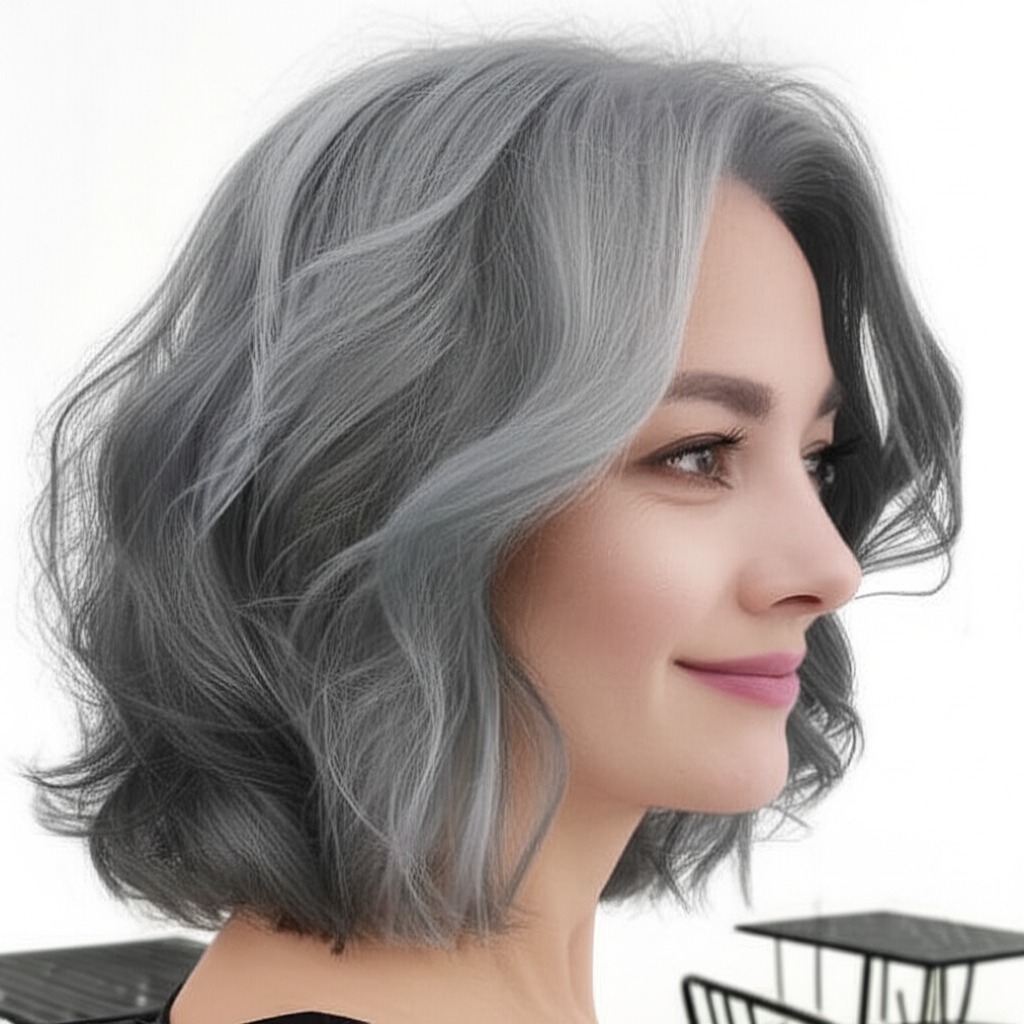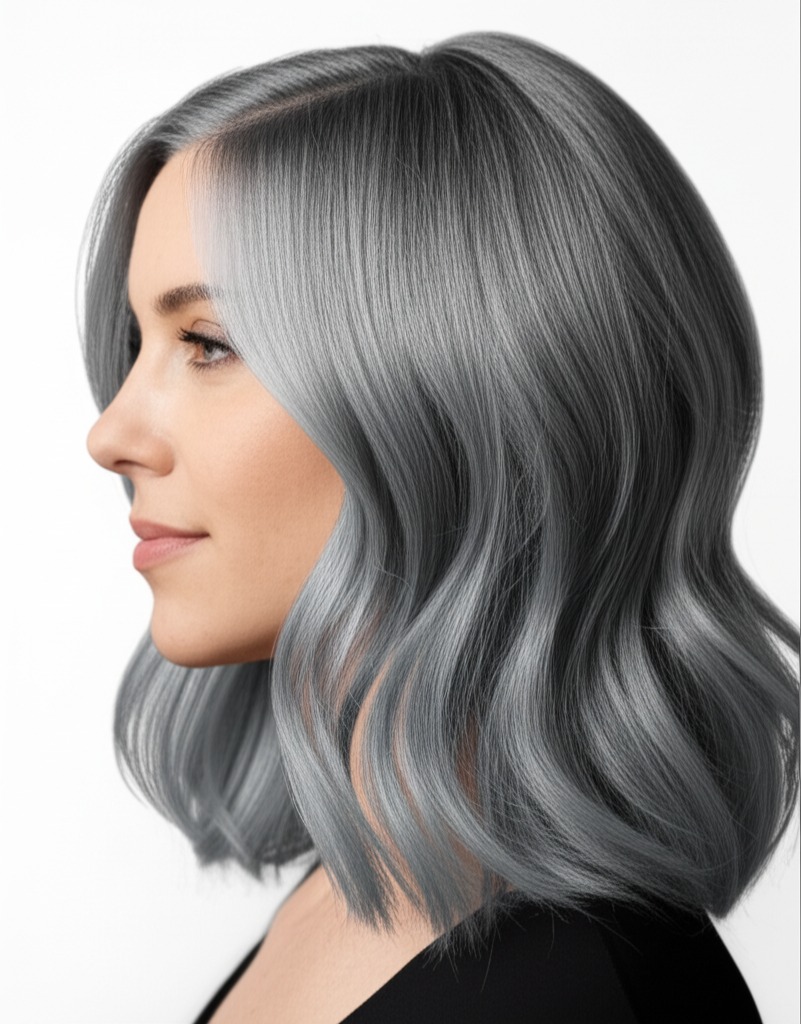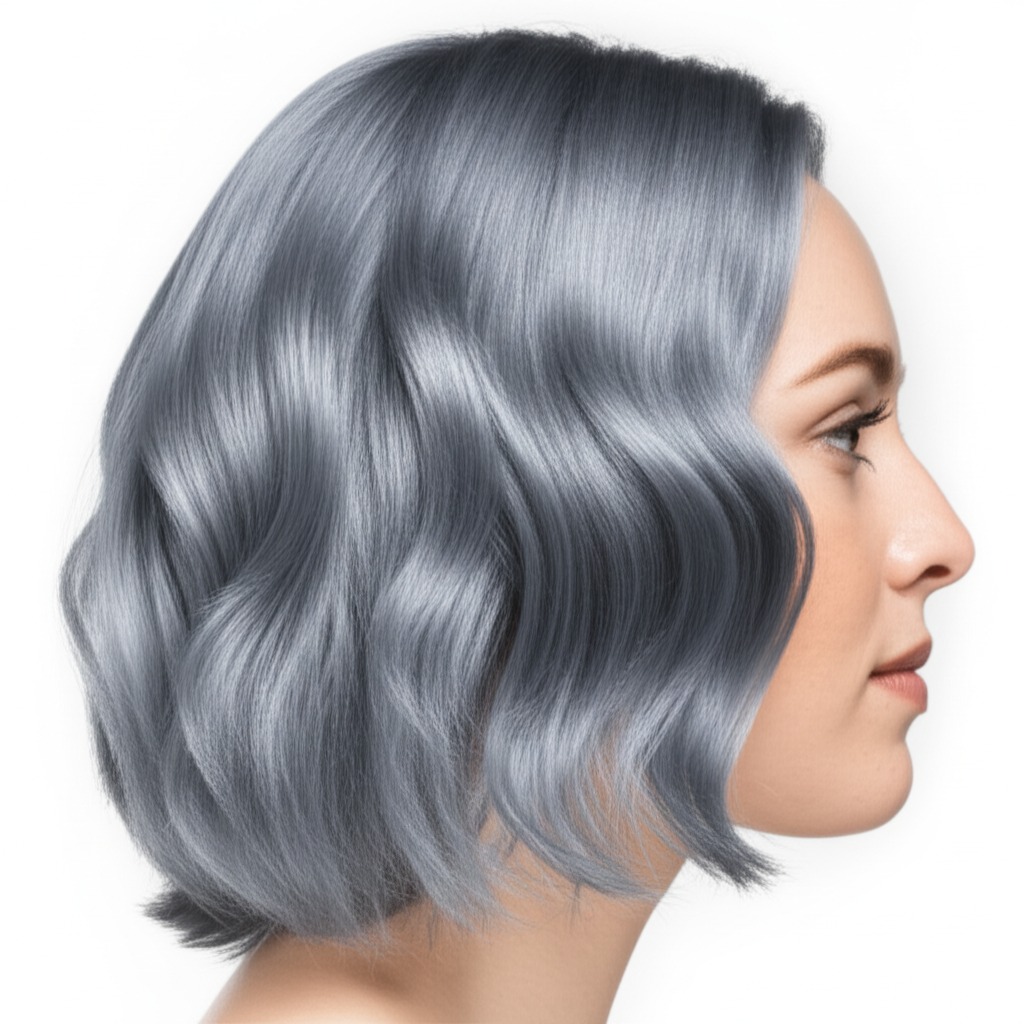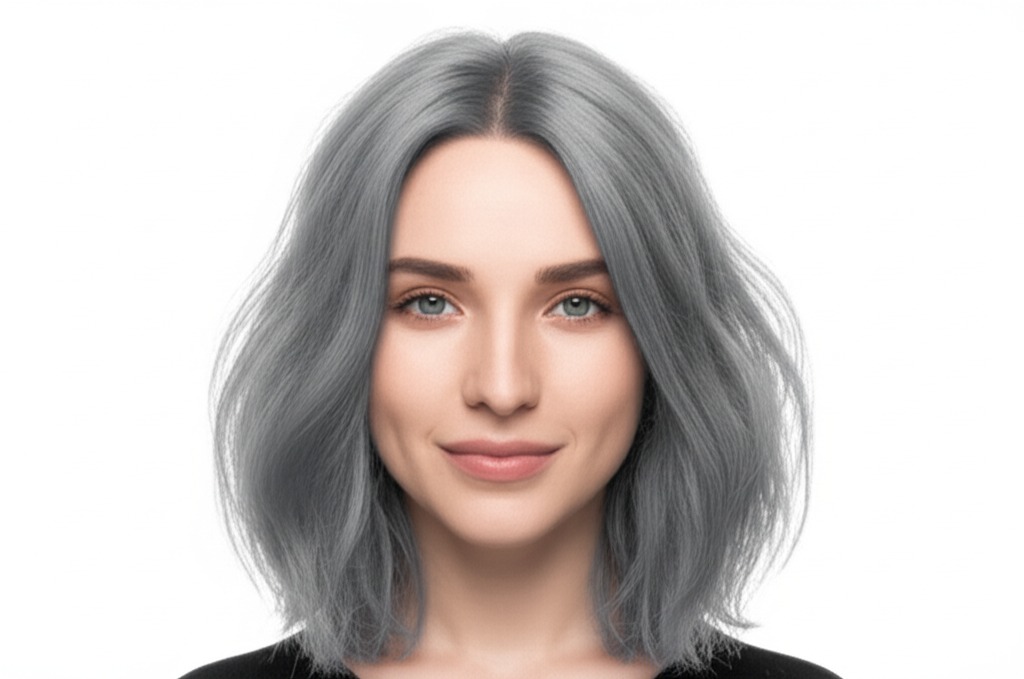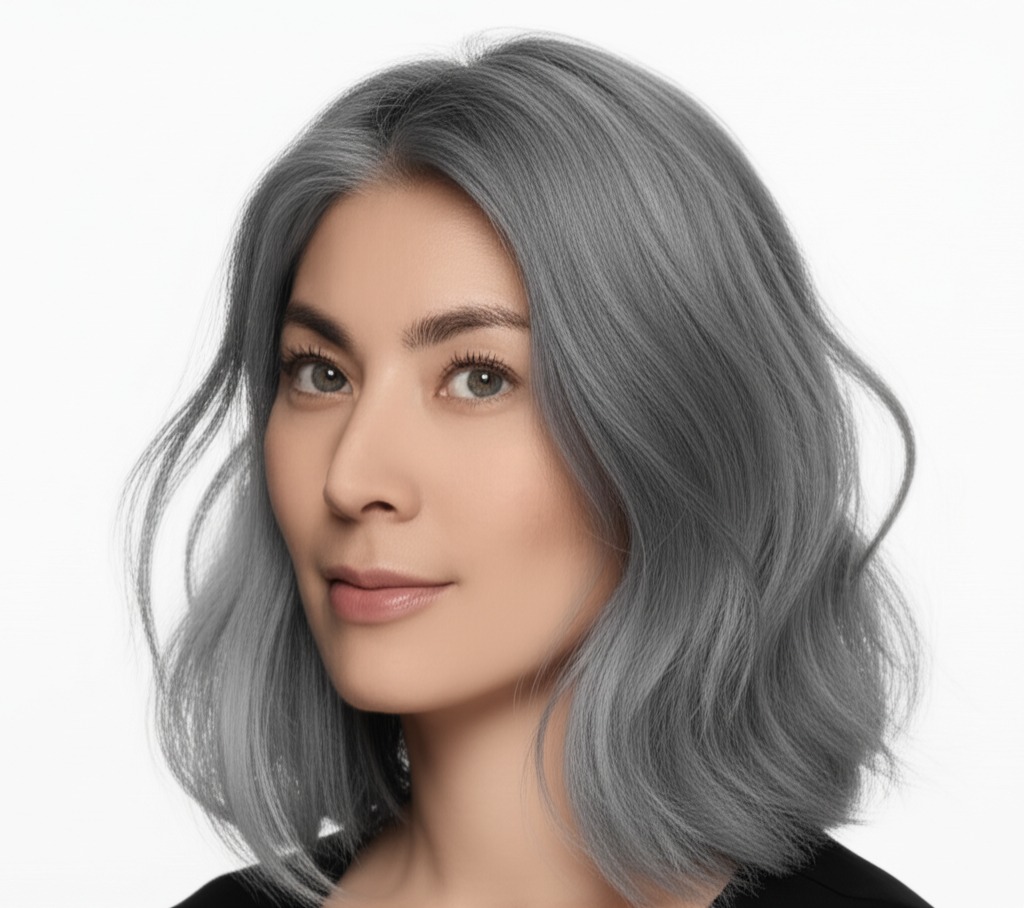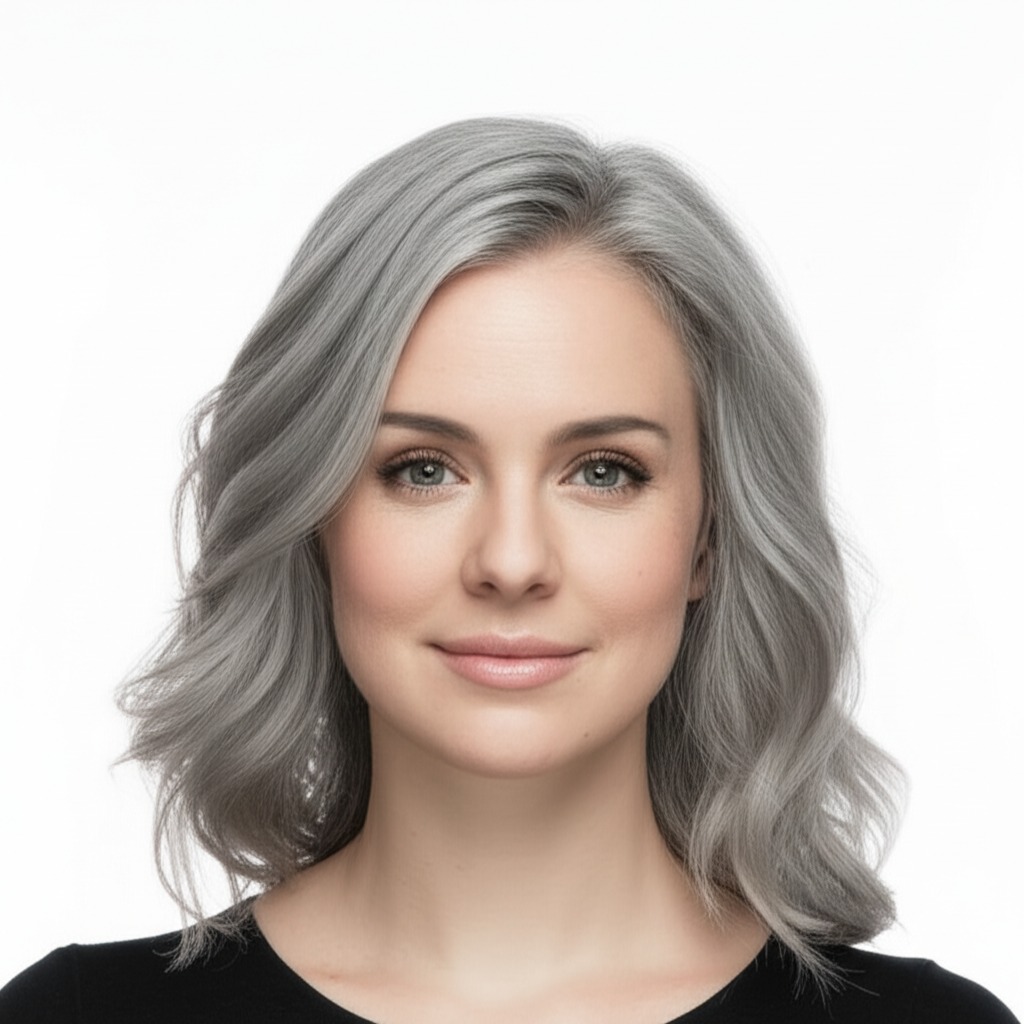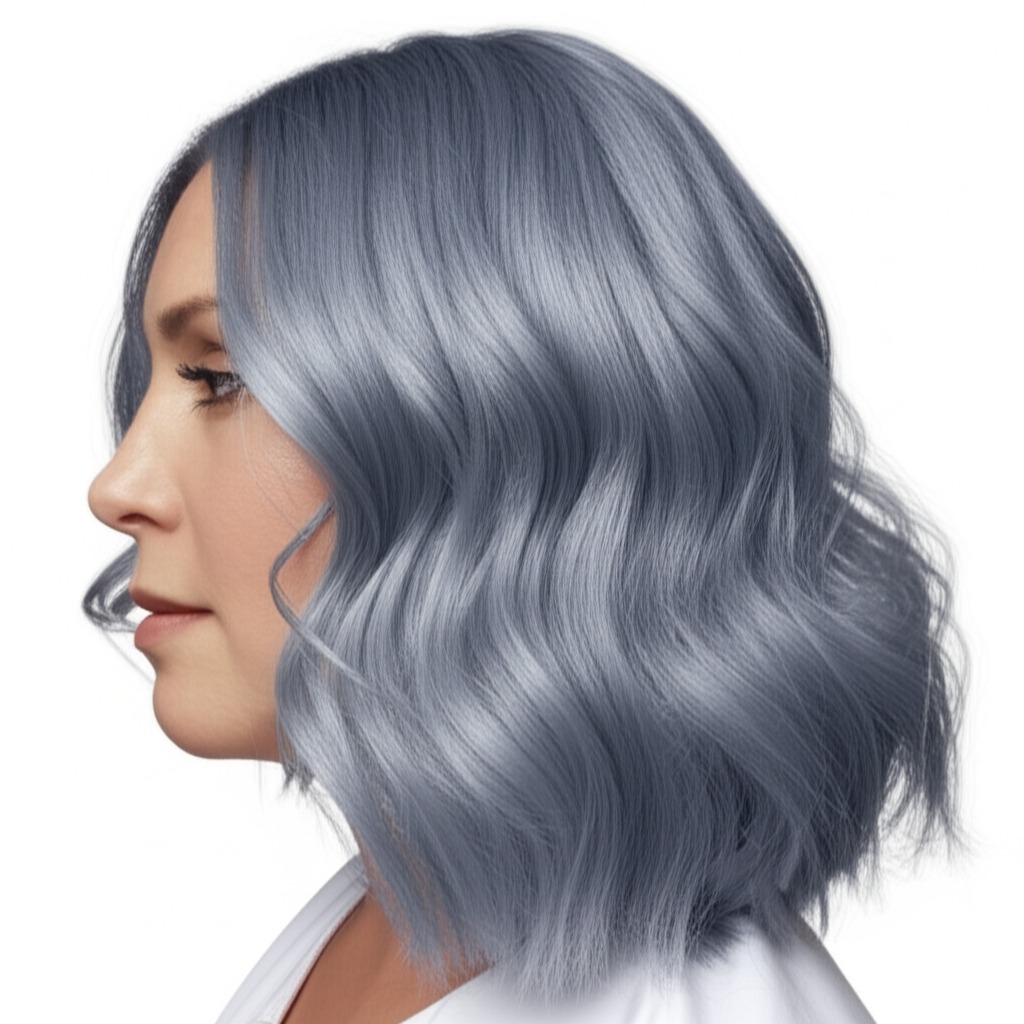#Smoke Gray Hair Color: A Guide for Gorgeousness
Smoke gray is the hair color trend that’s captured everyone's attention – but achieving it beautifully takes more than just a whim! It’s not simply “gray,” it’s a complex shade with depth and nuance. This guide will break down everything you need to know about smoke gray, from its undertones to at-home care, so you can confidently chat with your stylist or plan your color journey.
#1. Defining Smoke Gray: Cool & Complex
Smoke gray isn't one single color; it’s a family of shades! The key is understanding the nuances:
- Undertone: Almost always cool. Think silvery, misty mornings – not warm sunsets. A warm smoke gray will likely read as muddy or beige, which isn't what we’re aiming for. Some variations lean slightly neutral but rarely have warmth.
- Depth (Levels): Smoke gray can range from very light to quite dark. Hair color levels run on a scale of 1-10, with 1 being the darkest black and 10 being the lightest platinum blonde. A smoke gray typically sits between level 6-9 – meaning it's not jet black, but also isn’t super light and icy.
- Light Smoke Gray (Level 8-9): A more ethereal, silvery look. Requires significant lightening from darker starting levels.
- Medium Smoke Gray (Level 6-8): A softer, more blended gray that can work with a wider range of natural colors.
- Dark Smoke Gray (Level 4-6): Offers a dramatic and moody vibe; often preferred by those who want to subtly embrace graying hair.
#2. Who Does Smoke Gray Flatter?
While anyone can wear smoke gray, certain features make it especially stunning:
- Skin Tone & Undertone: Cool or neutral skin tones generally look best with smoke gray. If you have warm undertones (golden, peachy), the cool gray can sometimes clash and appear ashy. A stylist can assess this accurately.
- Eye Colors: Gray, blue, green, and even hazel eyes often pop beautifully against smoke gray hair. Brown eyes can also look gorgeous if the shade is carefully balanced – a darker smoke gray tends to work better with brown eyes than very light versions.
- Natural Level Starting Points: This is crucial. The lighter your starting level (closer to blonde), the easier it will be to achieve smoke gray. Darker hair requires more processing and multiple sessions to reach the desired lightness, which can impact hair health. Generally:
- Levels 1-4: Requires significant lightening – expect multiple salon visits spaced several weeks apart.
- Levels 5-7: Achievable with a few sessions, but still requires careful assessment by a stylist.
- Levels 8+ (already light): The easiest transition!
#3. Technique Options: From Subtle to Statement
The application technique significantly impacts the final look and maintenance.
- Single-Process: A full, even color application. Best for covering gray or achieving a solid block of smoke gray. Requires more lifting if starting dark.
- Highlights/Lowlights: Adding lighter (highlights) or darker (lowlights) strands to create dimension. Can soften the impact and add depth. Good for blending into natural graying patterns.
- Babylights: Very fine, subtle highlights that mimic a child's sun-kissed hair. Creates a soft, diffused effect – ideal for those wanting a gradual transition or a more blended look.
- Gloss/Toner: Used after lightening to refine the tone and add shine. Essential for achieving the precise smoke gray hue and neutralizing brassiness. A toner is often needed every 4-6 weeks.
- Balayage-Effect vs Solid: Balayage (hand-painted highlights) creates a softer, more natural look with less harsh lines of demarcation. A solid color application provides an even, bolder statement.
#4. Maintenance & Longevity: Real Talk
Smoke gray isn’t low maintenance! Be prepared for commitment.
- Wash Frequency: Less is more! Aim for 2-3 washes per week to preserve the color's vibrancy and prevent fading.
- Toner Refresh: Crucially important. Toners typically last 4-6 weeks, so plan for regular salon visits or learn how to tone at home (with professional guidance).
- Root Growth Pacing: As your natural hair grows in, the contrast with the smoke gray can be striking. Your stylist can blend roots using balayage or shadow root techniques.
- Budget/Time Planning: This is a significant investment! Expect multiple salon visits initially and ongoing maintenance costs. Budget $200-$500+ per session depending on your location, hair length & density, and the stylist's expertise. Time commitment: 2-4 hours per appointment (or longer for initial lightening).
#5. Seasonality & Pairing with Cuts
Smoke gray is surprisingly versatile!
- Bob/Lob: A sharp bob or lob looks incredibly chic with smoke gray – especially a lighter shade to highlight the clean lines.
- Long Layers: Long layers soften the look and add movement, particularly well-suited for medium to dark smoke grays.
- Pixie: A pixie cut can be edgy and modern with a smoky silver hue, but requires confidence!
- Seasonal Tweaks: In summer, consider adding subtle golden or beige highlights (very sparingly!) to reflect the sunlight – just ensure they remain cool-toned. Winter calls for deeper, more saturated smoke gray shades.
- Event/Occasion Picks: A lighter smoke gray is perfect for daytime events and weddings; a darker, moodier shade suits evening gatherings and professional settings.
#6. At-Home Care: Protecting Your Investment
Proper care is vital to keeping your smoke gray looking its best.
- Sulfate-Free Shampoo & Conditioner: Sulfates strip color! Invest in quality sulfate-free products specifically designed for colored hair.
- Clarifying Cadence: While sulfates are a no-no, occasional clarifying shampoos (every 4-6 weeks) can remove buildup and refresh the tone. Always follow with a deep conditioning treatment.
- Heat Protection: Heat styling damages color! Use heat protectant spray every time you use hot tools.
- Color-Safe Styling Products: Avoid products containing alcohol or harsh chemicals that can fade your color.
- Product Checklist: Sulfate-free shampoo, conditioner, leave-in conditioner, heat protectant, purple/silver toning mask (for occasional use), deep conditioning treatment.
#7. Common Pitfalls & Solutions
Let’s address potential problems:
- Brassiness: The biggest enemy! Use a purple or silver toning mask regularly to neutralize yellow and orange tones.
- Banding: Uneven color application, often due to uneven lightening. Requires careful sectioning and precise product application by a skilled stylist.
- Patchiness: Can occur if the hair wasn’t properly lightened beforehand. Corrective color is needed – best left to professionals.
#8. Pros & Cons: Weighing Your Options
Pros: Unique, stylish, can be flattering on many skin tones, blends well with graying hair (depending on shade). Cons: High maintenance, potential for damage if not done correctly, significant cost and time commitment, fade risk.
#9. Salon Consultation Script: Setting Expectations
Before you commit to smoke gray, prepare these questions/points for your stylist:
- “I’m interested in smoke gray hair color. Can you assess my natural level and undertones to determine if it's a good fit?”
- "How many sessions do you think I will need to achieve the desired shade?"
- “What is the recommended toning schedule, and can I learn how to tone at home safely?"
- "Can we discuss techniques that minimize damage while achieving my goal?"
- "What products do you recommend for maintaining this color at home?”
- "Let's look at photos of smoke gray shades - I want to be clear on the exact level and undertone I am aiming for."
#10. FAQs: Your Burning Questions Answered
- Can I go from black hair to smoke gray in one session? Highly unlikely without significant damage. Multiple sessions are almost always required, especially with darker starting levels.
- Will smoke gray make my hair look dull? Not if you maintain it properly! Regular toning and shine-enhancing products will keep it vibrant.
- How long does smoke gray last before fading? The color itself fades gradually over 6-8 weeks, but the tone (coolness) can shift faster, leading to brassiness.
- Can I do this at home? While possible for those with light hair and experience, it's best left to professionals due to the complexity of lightening and toning.
- Will smoke gray cover my grays completely? Yes, but a solid application may require more frequent touch-ups as your natural roots grow in. Balayage can blend grays seamlessly.
- Is smoke gray damaging to my hair? Any chemical process causes some damage. A skilled stylist will prioritize minimizing damage through careful product selection and techniques.
This guide provides a comprehensive overview of smoke gray hair color. Remember, the best results come from open communication with your stylist and realistic expectations!
